1443 - 1633: The Industrial Revolution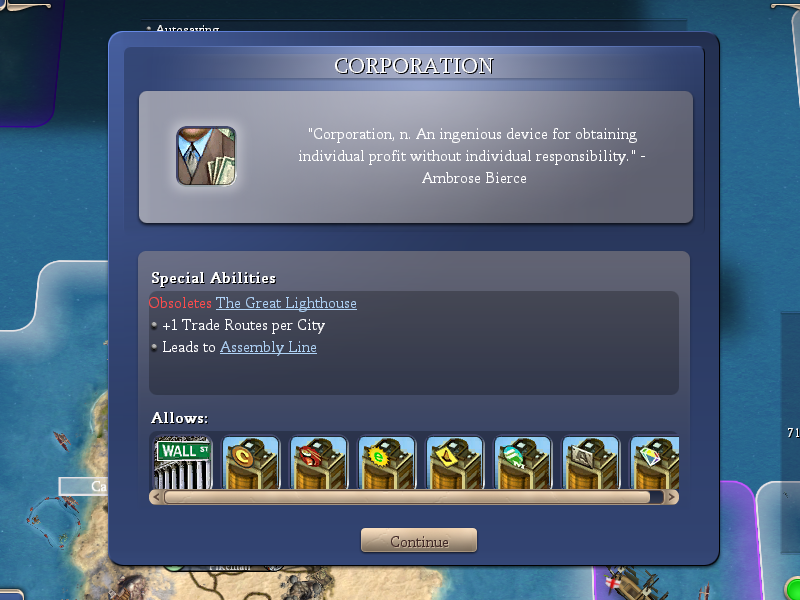 With Arthur's death and his councillor Merlin's disappearance came a time of uncertainty and indecision, as Arthur's three sons and daughter engaged in vicious squabbling for the throne, very nearly breaking apart the United Kingdom. Chancellor Cromwell managed to keep the country together, but the division saw an end to the brilliant administration and government of the prior thirty years, with a corresponding reduction in industry and wealth across the nation. Coincidentally, it is about this period that piracy began to slowly pick up again, focused on the coastal cities of Sumer. Whilst somewhat damaging, it lacked the brutal devastation of the Golden Age but was aided by the lack of strong navies in Sumer.
With Arthur's death and his councillor Merlin's disappearance came a time of uncertainty and indecision, as Arthur's three sons and daughter engaged in vicious squabbling for the throne, very nearly breaking apart the United Kingdom. Chancellor Cromwell managed to keep the country together, but the division saw an end to the brilliant administration and government of the prior thirty years, with a corresponding reduction in industry and wealth across the nation. Coincidentally, it is about this period that piracy began to slowly pick up again, focused on the coastal cities of Sumer. Whilst somewhat damaging, it lacked the brutal devastation of the Golden Age but was aided by the lack of strong navies in Sumer.
The inefficiencies of government increased the availability of work given to private contractors, and following on as an evolution from the stock-based partnerships of the prior centuries, the British government established the statute of incorporation; whereby investors could place their money in a company held not by any individual businessman (who would be liable in the event of bankruptcy or lawsuit) but an 'artifical person' with the same legal standing as a human but giving investors a layer of protection against the poor decisions of the company board. These corporations (from the Celtic 'corpus', or body) were able to undertake projects of scales even the sharehold companies of the fourteenth century would have found dauntingly ambitious. The first of these corporations, the Zululand Logging Company (ZLLC), was given a monopoly on lumbermill construction rights throughout Zululand, which was later extended to all of Africa and resulted in large-scale development of the timber industry throughout the early fifteen century.
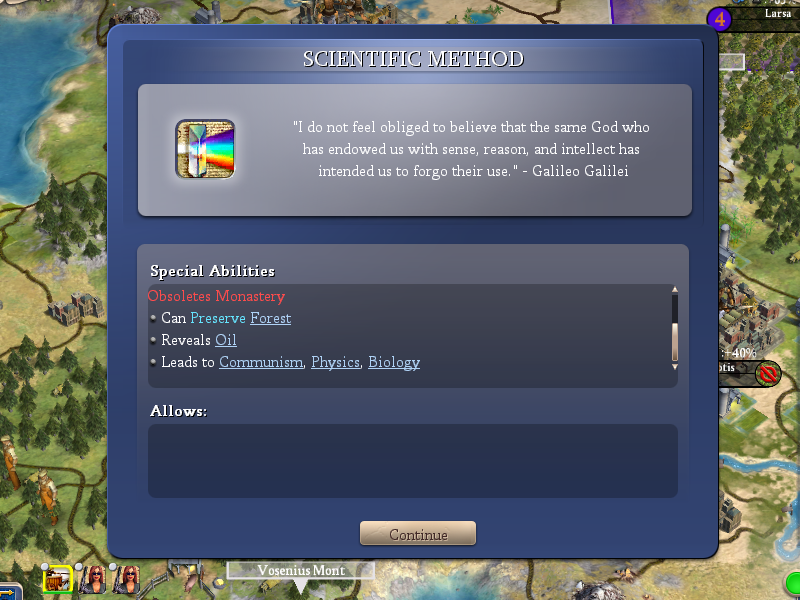
Starting in the latter half of the fifteenth century, the beliefs and ideals of the Renaissance became formalised in the scientific method; an approach to understanding the world based on observation, forming hypotheses based on observations; performing experiments to confirm or deny hypotheses, observing the results, realising that the hypothesis doesn't fit the results, reformulating the hypothesis, doing more experiments to try and falsify your hypothesis, getting extremely frustrated, and after about a thousand iterations finding a working understanding of some small facet of the universe. For all of its pitfalls and frustrations, the scientific backbone became the foundation of a new method of investigation; Science! Science birthed a deep love for understanding and appreciation of all facets of nature; chemistry, biology, physics, any part of Victory's great creation. It was this new love of nature that saw great swathes of forest around Delhi specifically preserved by royal mandate from the deprivations of the ZLLC.
With the development of science, the United Kingdom and its dependencies entered the British Industrial Revolution.
[The Industrial Revolution brings some fun cosmetic changes as well; gone are the sexy redbrick buildings and green-tiled roofs everywhere. Instead, we get multi-storey buildings of brick and concrete. Mines develop more of an industrial tone, with metal buildings and yellow-and-black warning stripes, farms turn from old wooden shacks into modern-looking silos, workers get yellow construction hats and orange overalls and spies turn from male ninjas into sexy Scarlett Johansson clones.]
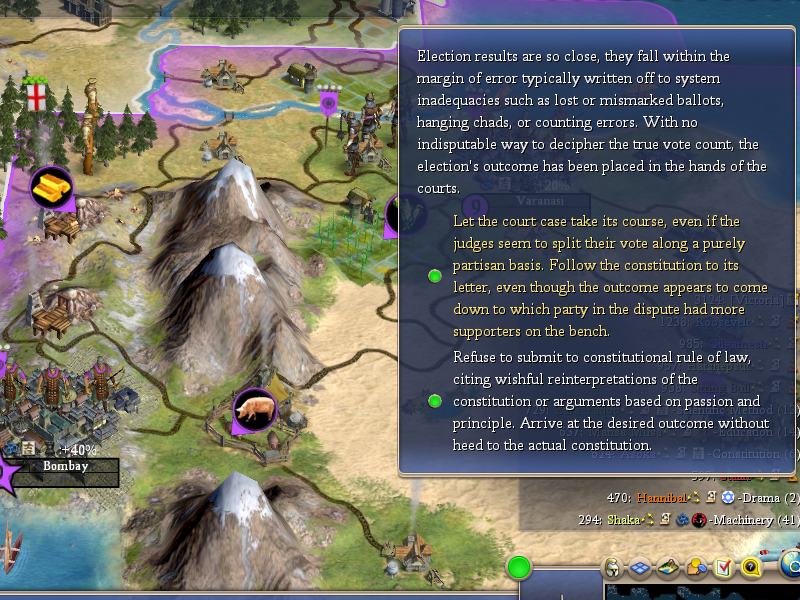
Whilst the fifteenth century did see a great deal of progression, the British democratic system of government was still horrendously corrupt by today's standards. The distribution of seats was based more frequently on abuses of the legal code or the use of seats in 'rotten boroughs', areas which had formerly been of political importance but which now had been eclipsed by other regions, leading to seats with few constituents and yet the same amount of voting power as one with hundreds of thousands of constituents, consquently making it very easy to bribe one's way into power in such a seat.
[Nice little event, gives me a choice between bonus gold or bonus culture from courthouses. I'm taking the bribery option.]
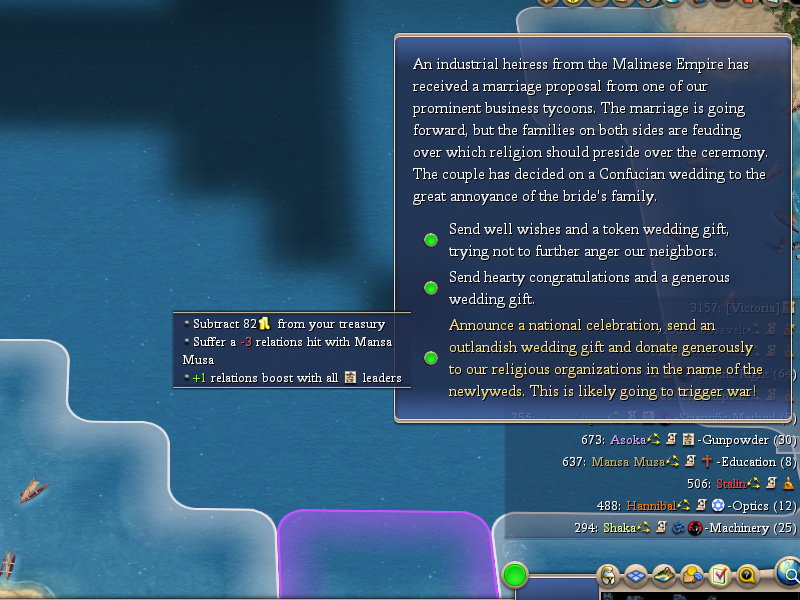
The rise of corporations also signalled the rise of 'new money', individuals from the middle classes risen to great wealth and social standing equalling that of the wealthy landed aristocracy. The politics of marriage and inheritance still proved as deadly a business to the new elite as it had ever to the old, however.

In 1482, Carl Linnaeus published his basic taxonomy for the living world, the first genuine effort to observe and record all of nature's organisms, although he believed that these categories were rigid and unchanging, the work of Victory held in stasis; unlike his contemporary George-Louis Leclerc, believing such categories to be more fluid, and the forms of animals malleable, although he was thoroughly opposed to the idea of evolution by natural selection. These key figures stand out amongst a generation of scientists that began to treat biology as a true science, and would give inspiration to later figures such as Charles Darwin and Gregor Mendel. Nevertheless, even the rudimentary work done on ecology, anatomy and life cycles was enough to greatly improve the output of agriculture, leading to the establishment of the four-field system; a form of crop rotation in which different crops were sown annually or seasonally in order to replenish the nitrogen content of the soil - without which, ruinous but profitable crops like cotton would destroy the soil nutrients and leave barren dustbowls in their wake.
As a young girl, Princess Eleanor Pendragon had grown up under the tutelage of various scholars and scientists in her father's court, and when she ascended the throne in 1489 (inheriting her aunt's estates as well and helping seal the breach of the prior fifty years) Queen Eleanor III spent an astounding amount of the royal treasury on establishing protection for the old growth forests around Delhi, particularly against the Zululand Logging Company and other companies. It became punishable by imprisonment to engage in industrial logging in the forests, which unlike the King's Woods of old was opened to the public under strict guidelines of conduct to prevent damage to the local ecology. The Vosenius Mons Royal Park was opened in 1490 and despite the angry complaints of the ZLLC in the newspapers was considered to be a great achievement. The parks encourged tourism both by scientists and common folk, many of whom wished to enjoy time in unspoilt woods, where their own were being clear cut for industry or brutally managed by the timber companies. Many came to the park for spiritual reasons, resulting in a period where priests and holy folk became especially common in Delhi and its surrounds, and many skilled individuals moved to Delhi for its improved quality of life and clean air, a stark contrst to the growing industrialism of the rest of Britain and Africa.
[Spent 3700 to build the National Park in Delhi. Worth it. Delhi has 7 forest squares around it, and is shaping up to be my Wall Street city. The Park gives you a free specialist for every forest preserve in its demesne, so that's eventually going to be a ton of free merchants to grow fat on.]
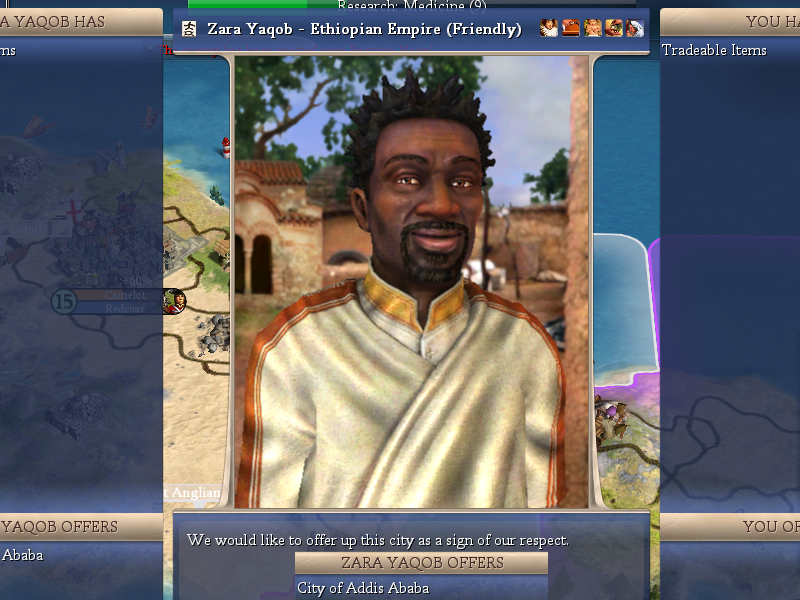
Queen Eleanor inherited something of her great-grandmother's skill with subterfuge. Throughout the early years of her reign she ensured significant investments in companies and merchant operations with business in the border city of Addis Ababa, which had long contested land with the Welsh. Taking advantage of long-established Welsh communities in the city, Eleanor propped up charismatic local Welshmen with funds and propaganda, installing them in key political positions within the city and its surrounding shire. By 1498, the city was controlled by ethnically Welsh citizens with British agendas and a clear nationalist campaign. When arms were shipped to the more radical elements of the city's community, the city was placed on the very edge of rioting, and the patricians of Addis Ababa made their case to the Duke of Ethiopia; release the city to Wales, or its nationalist partisans will take it.
[I have often lamented that we can't just buy cities any more in Civ IV. Well, as it turns out, you can - they're just very expensive to do so. With spies, you can spend EP to add a bonus of 5% to a rival city's culture (i.e. 5% of their total culture), but the catch being that said culture is tagged with your own influence. Send in twenty spies or so and suddenly you're in a position to flip them.]
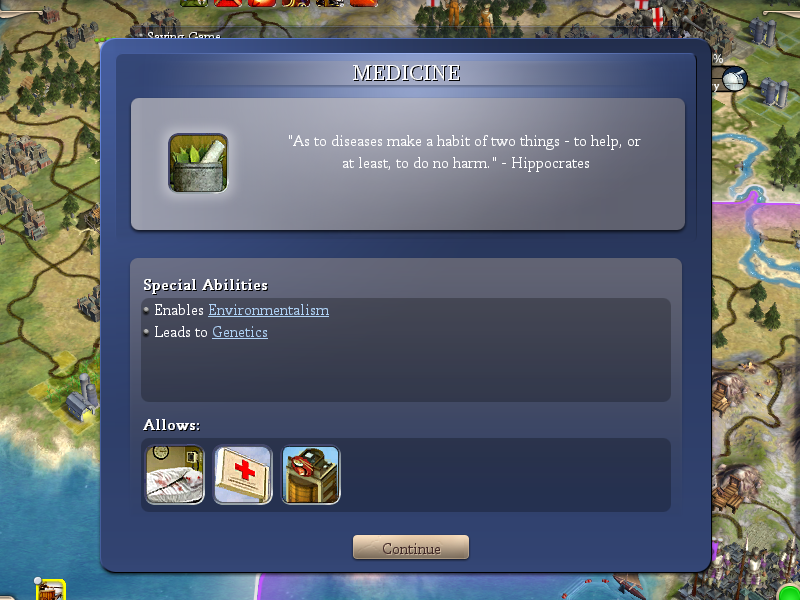
Eleanor III's reign continued into the sixteenth century, bringing with it further advances in science. A keen naturalist and anatomist, Eleanor dedicated a great deal of funding to research into anatomy and diseases, especially developing the field of medicine from a hodge-podge mixture of apothecary, field-surgery and death into a scientific discipline with some vague concept of professionalism and aseptic practice. Under her care were the first true hospitals established and a growing ethos of at least attempting to live non-destructively with nature that went somewhat at odds with the nation's classically laissez-faire economic policy.
The advances in biology of the prior twenty years had also given insight into the migration patterns of schools of fish, improving catch rates at sea. It was an enterprising Anglo-Indian fisherman by the name of Siddhartha Sidmouth who saw the potential for greater profits in this than individual fishermen or fishing companies could achieve. Sidmouth had spent many years in America, where he had grown accustomed to the traditional Egyptian dish of 'sushi', a variety of wrapped rice dishes, often incorporating seafood. Although rice was not native to his homeland of Indo-Africa, fish and shellfish certainly were, and he returned to Delhi in 1512 to establish a series of seafood restaurants based on sushi and other traditional seafood dishes; Siddhartha's Seafood and Sushi Refectory (Sidmouth was not gifted at choosing names that roll off the tongue). His true brilliance came in his skill at logistics; co-ordinating a company that quickly grew into a monstrous behemoth with new franchise outlets, stocks from hundreds of different fishermen and fishing companies and the necessity for large-scale import of rice from the Americas to make his enterprise possible. Yet his corporation survives even today, under the trading name Sid's Sushi. Whilst established in the interests of profit, Sid's Sushi and its competitors would prove essential at moving food from
[We have incorporated the first Corporation; Sid's Sushi. Sid's Sushi works a bit like a religion in that we have to spread it around with executives in place of missionaries and we get bonus gold in its Headquarters (holy city). Unlike a religion it costs a punishing amount to run a corportion branch (halved with courthouses, scales with population) and it grants a bonus to whatever city it is present in, based on how many resources it has access to. In the case of Sid's Sushi, for every fish, clam, crab and rice you have access to, it grants a city +0.25 food and +1 culture. Right now it's granting Delhi +6 food and +24 culture, but the food is the important part. Once your cities get big enough, this is one of the only ways to keep getting additional food beyond the tiles.
Actually, after trading away about 73 gold/turn and a couple of expendable resources, that bonus has gone up to +9 food and +36 culture. This might seem like a poor exchange, but this is a bonus I can spread across the whole of the empire. Across 24 cities, that's 231 extra food per turn (plus some ruinous expenses).]
The incorporation of so many businesses in Delhi, both successful and otherwise, combined with the surplus of skilled labour created a fertile ground for a financial market. In particular, stockbrokers who had formerly worked at the Royal Exchange in London and had been dismissed (chiefly due to rowdiness, drinking problems or being on the wrong end of politics) found a new home to buy and sell stocks in the coffee houses of Delhi. The famous brokerage, Lloyd's of Delhi, started out as Lloyd's coffee house, a comfortable cafe in the shadow of the Temple of Artemis (re-christened to Victory a millenium prior) that overlooked the harbour and became a popular and informal location to swap news about business ventures and conduct trades. Lloyds and other financial institutions grew in power and significance until they dominated a whole square mile of Delhi, known as the City. Even within the sixteenth century alone, the City came to be responsible for over a third of the nation's wealth. Today notable high rise buildings such as the Oriental Trade Centre and the Sid's Sushi headquarters can be found in the heavily developed City, a financial powerhouse of the modern age.
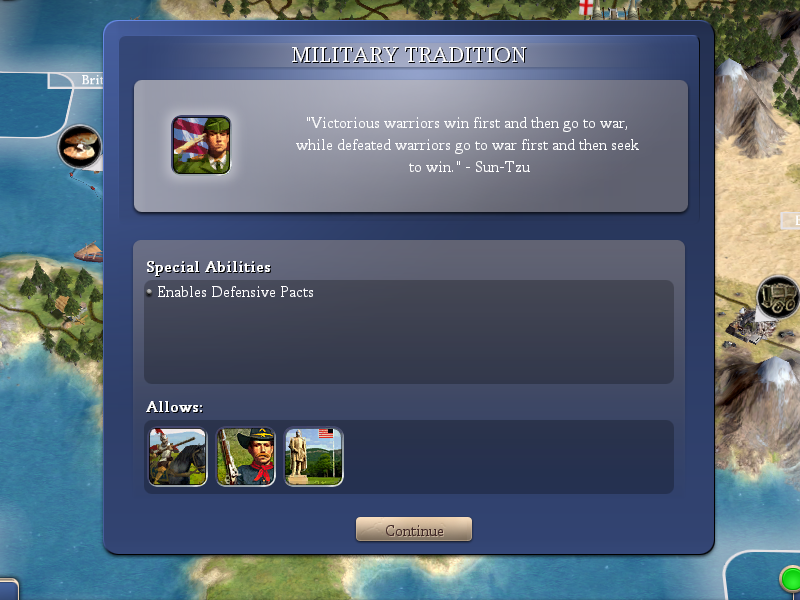
The early sixteenth century also saw the culmination of the transition from the feudal armies of the middle ages and renaissance to modern, professional, nationalised armies composed of soldiers loyal to and responsible to their government rather than their local liege. This military tradition permitted large, mobile armies not tied to geographic areas as per vassalage and also permitted social and rank mobility based on merit rather than birth. This was best reflected in the Royal Army, which saw a division into its traditional brigades ("Irregulars", by the newer terming) and regular armies divided into the Royal Infantry for general combat, Royal Urbaneers for city-based combat, Royal Guard for defensive combat and Royal Marines for amphibious assaults. The Royal Navy saw similar restructuring, with the buccaneering days of privateer captains and their crews disregarded in favour of an organised fleet of frigates with captains responsible to the chain of command.
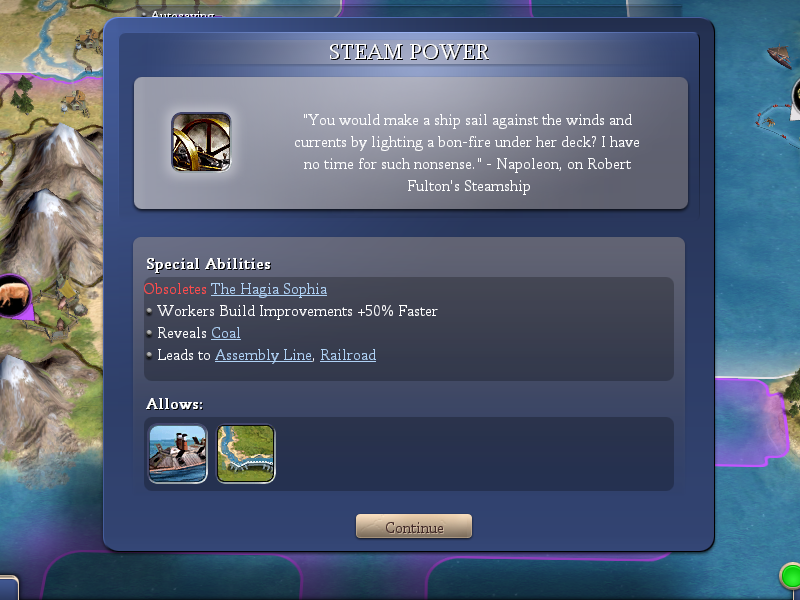
In 1538, Gilbert Bates successfully demonstrated his first working steam engine. Steam engines had been devised previously in history (Hero of Sumer in particular is noted for having developed one in the fourth century BCE, as a novelty) but Bates' engine coincided with high labour costs, the abolition of slavery, serfdom and the caste system, and the availability of coal as a cheap fuel source. He demonstrated that the engine could be harnessed to a pump to drain flooded mineshafts and quickly revolutionised the mining industry. Overnight the young, brilliant man became a millionaire.
The steam engine saw uses across all walks of industry, from mining to textiles to river ferries. Anywhere that a simple, repetitive task could be automated (and multiplied a thousand times over without the requirement of additional staff), the steam engine could do the work of many expensive, unskilled labourers. This heavily increased production, making certain goods significantly cheaper and more available to all - but also put many traditional artisans out of work, a trend that would only increase with time.
By 1540, Siddhartha Sidmouth's Seafood and Sushi Refectory had successfully established franchises all across British Africa. Over the next twenty years it would also establish itself throughout the British Isle as well. The regular, commercialised import of seafood represented a paradigm shift in the logistics of supply for urban environments, allowing a far larger urban population than local fields could permit and encouraging the shift from an agrarian to an industrial lifestyle for Britain's people, increasing the available labour for the mills of the realm. Such populations helped restore the power of the middle class that had been broken by the reforms of Arthur, resulting in a renewed interest in literacy and education - especially amongst the middle classes who had aspirations for their children. One such man was Philip Martel, a foreman in a factory in Carthage that produced and preserved bacon for long-distance trade. Martel ensured that his newborn son, Charles, would receive the education he never had. Who knows if he expected the things his son would go on to achieve?

By the 1550s, the need for large quantities of hard-wearing, strong metal to satisfy the demands of industry had created pressure to develop reliable methods of manufacturing steel. The blast furnace, developed in 1551 by Henry Bessemer, made it possible to produce steel on an industrial scale. Cheap steel combined with the steam engine made armoured warships possible, powered by steam and pushed along by turbines, independent of wind or tide. Whilst the early ironclads could not hope to outpace the frigates of the time, their independence from the sail permitted them to carry truly monstrous artillery beneath their steel skin. The changes in ship manufacturing and the availability of new materials made it practical to establish drydocks, artificial bays where a ship might be moored, its surroundings drained, and crews to conduct repairs without having to actually lift the ship out of water.
The increasing demands for industrial materials saw many renegotiations amongst classically stable markets. Demand for surplus gold and coal in the home market saw many goods that had been classically traded to the Americas for such wares as rice, furs, wine, dyes and silk replaced with less valuable goods such as grain and bacon, with the surplus made up through the simple expedient of currency - a net flow of wealth towards the Occident became the norm, much to the dismay of certain newspapers in London who saw only the loss of money and not the gain in resources.
[For reasons that will become clear, I need all the coal I have and all the gold I possess and used to trade off west. This meant renegotiating a deal with Roosevelt where he supplied me fur, wine and rice for corn, pigs and gold. Since Sitting Bull increased his demands for selling me wine and silk I ended trade with him and re-negotiated with Roosevelt for those as well. In the end we get rice, furs, wine, dyes and silk in exchange for corn, pigs and 68 gold/turn. It's a ridiculous amount of money, but keeping the coal and gold (to say nothing of the happiness bonuses from dyes and silk we need) is worth it. At least until we can take the resources we need - but there's a target closer to home for that.]
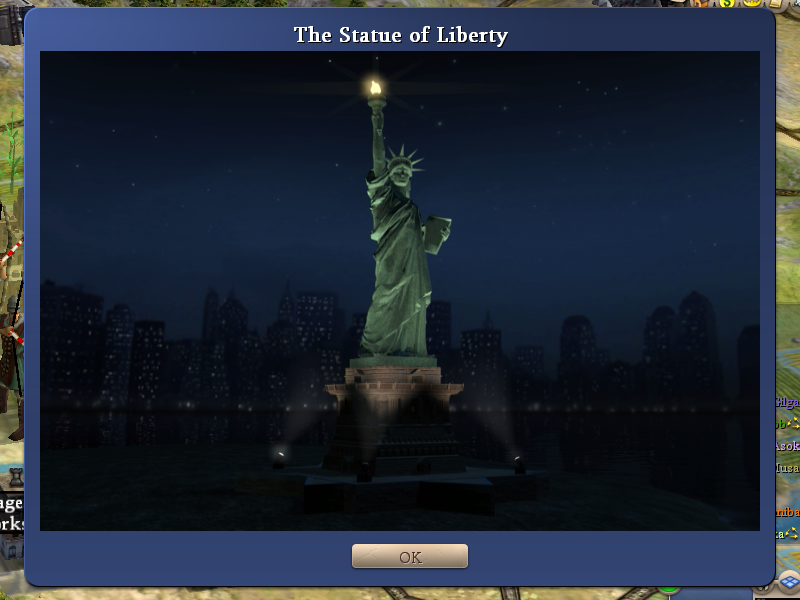
In 1565, the Statue of Liberty was constructed in Carthage in celebration of the coronation of the child monarch, Queen Victoria, a testament to the manufacturing skills of that city but far more importantly to the spirit of its inhabitants. Representative of one of the classical sister-goddesses of Victory (before the monotheistic purges of Confucianism), Liberty stood as a reminder of the hard and at times meandering path that the people of Britain had taken to reach their emancipation, especially those of Africa who had suffered greatly at the hands of their conquerers. Built upon an island in the river that runs through the city, Liberty holds aloft the torch of Reason, whilst standing upon the broken chains of oppression. 300ft high, in brilliantly verdigris copper plating, Liberty stands as a promise to the people of Africa - never again. For those of British Africa, at least, this would remain true.

For all the innovations and developments of the Industrial Revolution, the invention that changed the face of the social, economic and literal landscape was that of the locomotive. In 1572, a wealthy, elderly and still brilliant Gilbert Bates revealed the Rocket, a horseless carriage powered by a steam engine that turned its wheels. Too huge and unwieldy for personal use and with no ability to traverse routes that were not laid with metal tracks for it to follow, the steam engine could only travel forward and without steering. Yet this engine was faster than any horse had ever galloped. It could pull loads that only slow and ungainly river barges could hope to carry. Goods, people, soldiers, information
could travel on this train and reach the other end of a continent in but a handful of days. With the sale of his engines and his heavy investment in Bessemer's steel mills, Bates made a further fortune laying track and running trains.
Even more than that, Bates sought to control all aspects of his industry, even from the ground up. With his considerable personal wealth and the investment of tens of thousands of hopeful but modestly wealthy individuals, Bates established the Bates Mining Corporation (nowadays known by the moniker Mining Inc.). The BMC handled mining operations across the length and breadth of British-dominated territory, extracting coal, iron, copper and precious metals for use in all manner of industry, but especially in the construction and running of the railroads. Incorporated in Delhi with its business-friendly environment and tax laws, the BMC used many of the same tactics that Sid's Sushi employed to establish markets across the British world and to facilitate the logistics of production and transportation of raw and refined materials where they needed to go.
[Railroads! Railroads represent for many, I believe, the transition from mid-game to end-game, or perhaps the latter end of the mid-game. Railroads, firstly, are like roads but instead of multiplying movement by 3 (or perhaps costing 1/3 of a move per space) they cost 1/10th of a unit's total move, regardless of their move score. So a redcoat (1 move) will travel just as quickly as my Moraled-up cavalier (3 move) - 10 squares. Which really makes sense, given they're on the same train. The second benefit is that railroads grant a small minerals bonus to mines and lumbermills, both of which we have in excess amounts. These two bonuses are quite enough to change the game (because unprecedented travel speed can do that), but it also unlocks Mining Inc.
Our second and probably last corporation, Mining Inc. competes against all the corporations that Sid's Sushi does not, so the two synergise well. Mining Inc gives you +0.5 minerals for every resource you have, and it uses iron, copper, coal, gold and silver, all valuable but not terribly useful in excess. We have 25 of these after trade, so we're pulling in 12 bonus minerals a turn in Delhi, soon to be elsewhere. This is the equivalent of over two iron mines without the expenditure of any population. Of course, the upkeep is punishing as ever, but the reason we established our HQs for both corporations in Delhi is that with Delhi's Wall Street and other financial building bonuses (+225% wealth creation), we might not make a profit but we severely dampen the loss.]
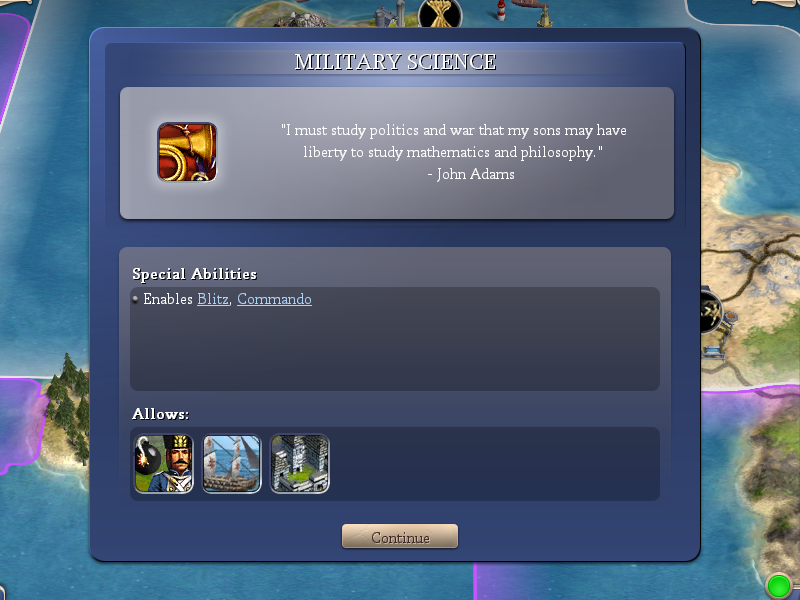
Charles Martel, educated in a public Confucian school in his youth and then later at the University under the prestigious al-Walid scholarship (still around after a thousand years), achieved his commission in the late 1560s and worked chiefly beneath the lesser-known General Briggs in charge of recruitment and training at Camelot, the nation's foremost military training grounds. Martel worked extensively with logistics and the theory of warfare and experimented heavily with training exercises on the new recruits. He perfected the use of grenades as a counter to rifle formations (not that other nations possessed rifles to use) and was responsible for training ship crews in the art of quick-reload of cannons, firing, turning to fire the other side's cannon and then firing the first broadside again by the time the ship had revolved. With these techniques it was possible to get off four volleys in the time it took for an enemy to acheive one. Although the designs were not used, he sponsored the work of shipwrights seeking to improve upon the design of the frigate, even as the Age of Sail began to draw to an end with the advent of the ironclad.
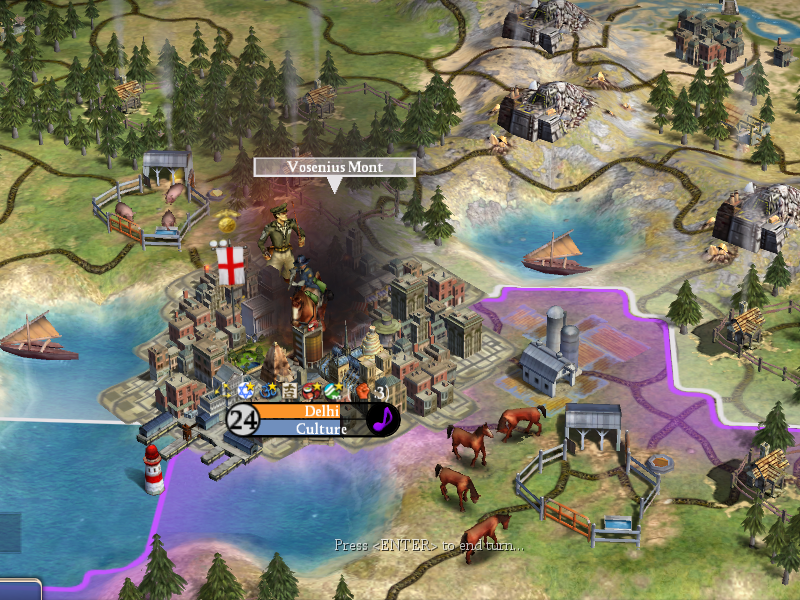
Throughout the 1590s, a series of riots rocked Delhi. Nationalist partisans seized key buildings, holding the government and corporations based in the city to ransom in an effort to restore the jewel of India to its cultural ancestors. Despite the best efforts of local government, it remained six years before the city could be restored to a working state, despite heavy pro-British propaganda efforts in nearby Bombay. The loss of the financial capital of the United Kingdom caused a major depression that held back social, economic and technological progress for years.
[Didn't notice it, but Delhi had 50% Indian culture to our 45% British, so I daresay a revolt had been waiting a while. By now it was an 8% revolt risk, though. Remainder was a 5% Carthaginian ghetto, presumably. Upping the garrison to counteract.]
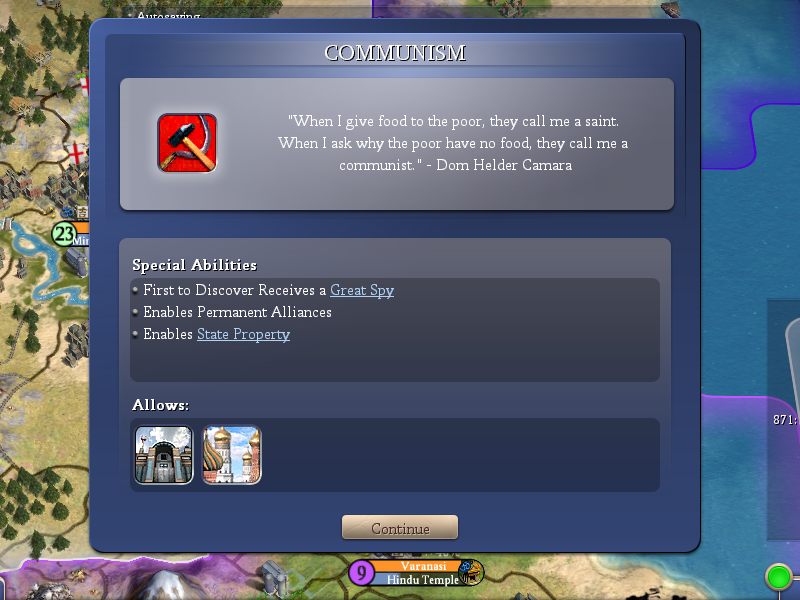
In the wake of the poverty and dissatisfaction brought about by the Depression, there were those who blamed the capitalists for their plight, believing that the world was divided essentially into the "haves" and "have-nots". Karl Marx, in 1602, published his seminal work "Das Kapital" in which he laid out the lines of a new society based upon equality of labour and possession - Communism. In a communist society, each would work according to his ability, and receive largess according to his needs. Whilst the movement did not see any initial success, there were those who saw such movements as an excellent way to build support for their causes.
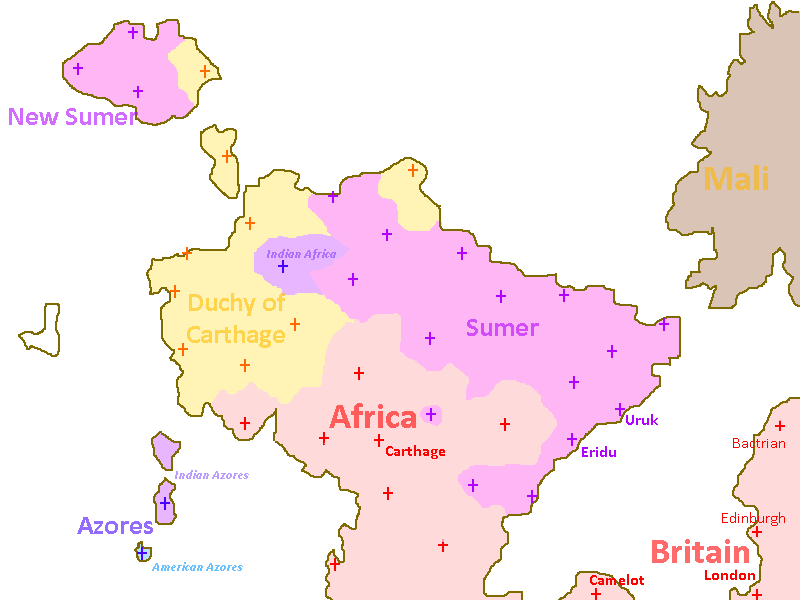
A map of northern Africa, 1614
For most of his life, Charles Martel remained a peacetime officer, training soldiers and increasing the stock of the nation's armies. It was only in his old age that he was able to put his skills to practical use, engaging a plan he had made forty years prior and merely adjusted for the modern day.
In 1614, the aqueduct system of Carthage, a city already populous and driven by industry to the point of ill health, was poisoned with arsenic. Although the city hospital was able to save many lives, this was still an attack that outraged many across Britain and although no Sumerian instigation could be proved, served as a casus belli for increasingly demanding negotiations with King Gilgamesh. Over the next few years piracy reappeared on the Sumerian coastline, privateer caravels wrecking Sumerian shipping in what might be considered the last hurrah of both piracy and the Age of Sail. In 1619 troop buildups were observed on the Sumerian border and on June 6th 1618 the British ambassador presented a formal declaration of war. Three days later, the first ships reached the shores of Sumer.
It is important to note that despite the inciting incident, war with Sumer was chiefly based out of economic factors. With ample mineral wealth and rich coasts stocked with fish and shellfish, Sumer held many resources that were greatly desired in Britain's industrialising economy. As shown in their relations with the Americas, Britain was both capable and willing to trade for these resources in the main, supplying goods or frequently money for their needs. Sumer had previously held poor relations with Britain due to their staunch Jewish beliefs, but in recent years their government had imposed a policy of tolerance, permitting free worship. However, centuries of border tensions, diplomatic insults and a generally uncooperative attitude as a result of the former religious strife had resulted in a political environment where trade was difficult if not impossible, with the final nail on the coffin being that of the staunch protectionist economic policy employed by the Sumerian government. Britain, but especially the British corporations that held the nation's future in its grip, had long desired Sumer's resources and finally had a pretext to take them.
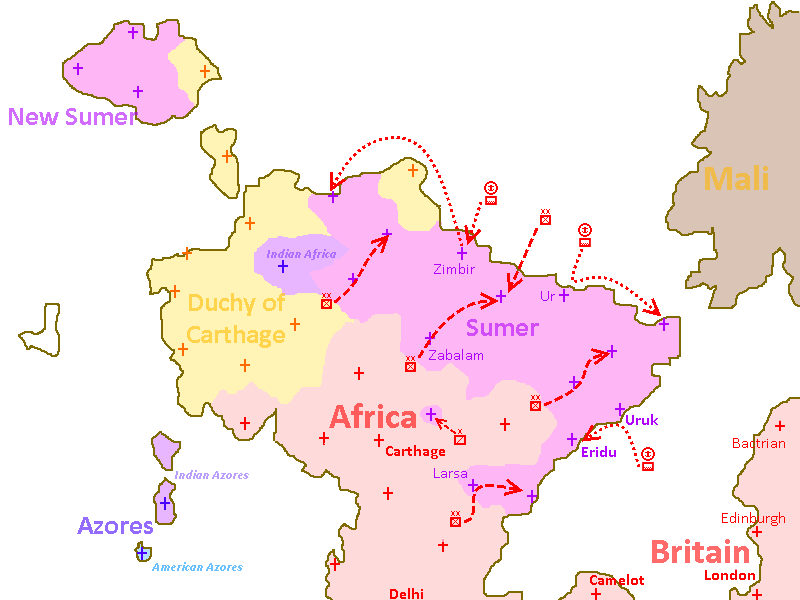
The Martel Plan
The goal of the Martel Plan was to attempt to achieve victory with mininal infrastructural damage, by attempting to seize the entirety of mainland Sumer in a series of simultaneous lightning strikes from sea and land. Two basic task forces were established; the Territorial force was composed of five divisions, each consisting of three brigades of redcoats, suited either to general combat or urban warfare (Infantry, Irregulars or Urbaneers), a committed unit of defeners employing Sir Hiram Stevens Maxim's new design for a belt-fed repeating machine gun, and two brigades of cannons. The Naval force was split into three divisions, each employing two galleons for transport, three frigates for escort and bombardment, four brigades of marine riflemen and two brigades of machine gunners for garrison. A few brigades of cavalry were also used for support on the home front and for eliminating stragglers.
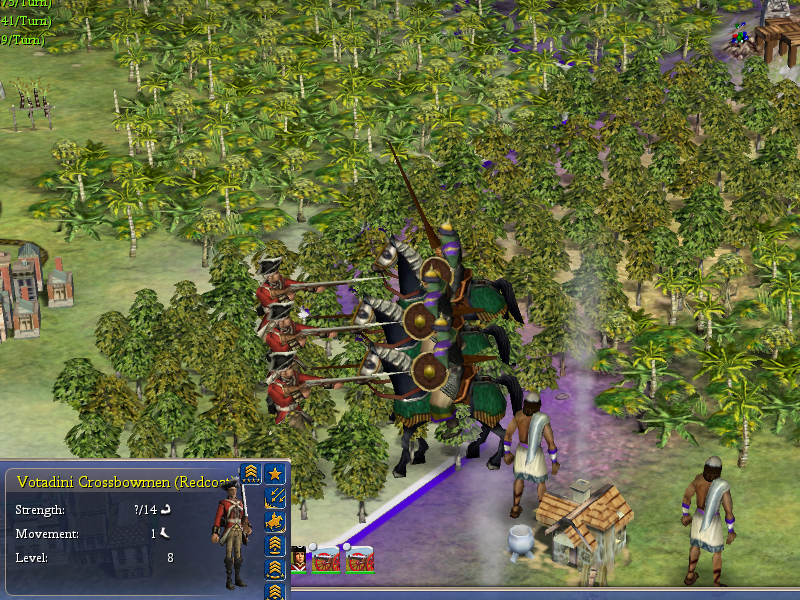
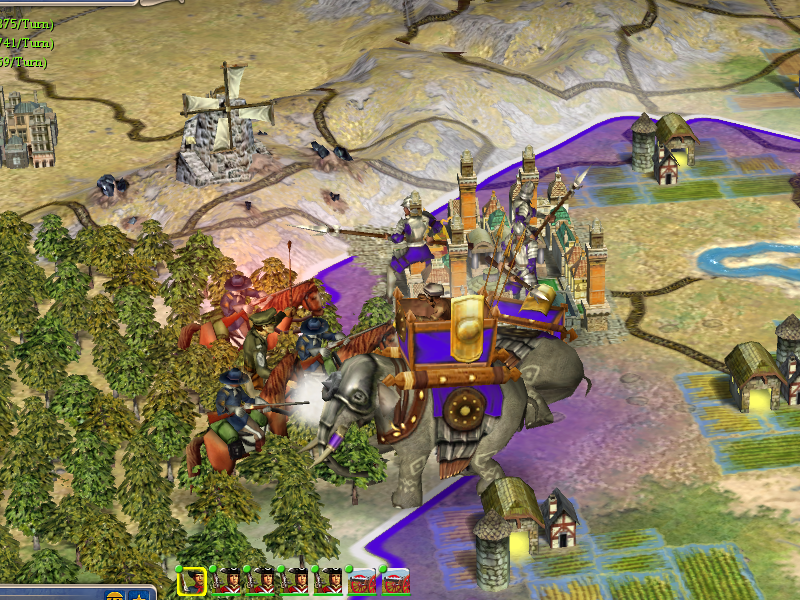
On the 9th of June, 1618, the first Naval division arrived in the harbour of Uruk. The frigates began bombarding the castle and dockside garrisons, whilst the complement of marines stormed the shore to make their first strikes. Within the same hour, the same process repeated in Ur and Zimbir, with bombardment and landings in preparation for attack. Territorial forces simultaneously advanced upon Lagash, Zabalam, Larsa and Girsu. A popular serial, Langdon's War, was released based upon the initial fighting in the jungles of Lagash where the Irregular regiment descended from the old Votadini marksmen engaged in the initial advance, gunning down rank after rank of Sumerian knights.
Yet for all their technological advantage, the Redcoats encountered staunch resistance at the cities themselves. Many Sumerian cities had been built on hills, and although their walls and castles were little advantage against cannon-fire, their garrisons whilst merely employing longbows were still excellently trained and deadly to those attacking from below. In many cases, sieges stretched out over a year in length before their targets came close to falling. In Uruk at least, a lengthy siege was spared when traitors blew open the ramparts of Chichen Itza, the greatest Sumerian castle, allowing besieging forces to enter unimpeded.
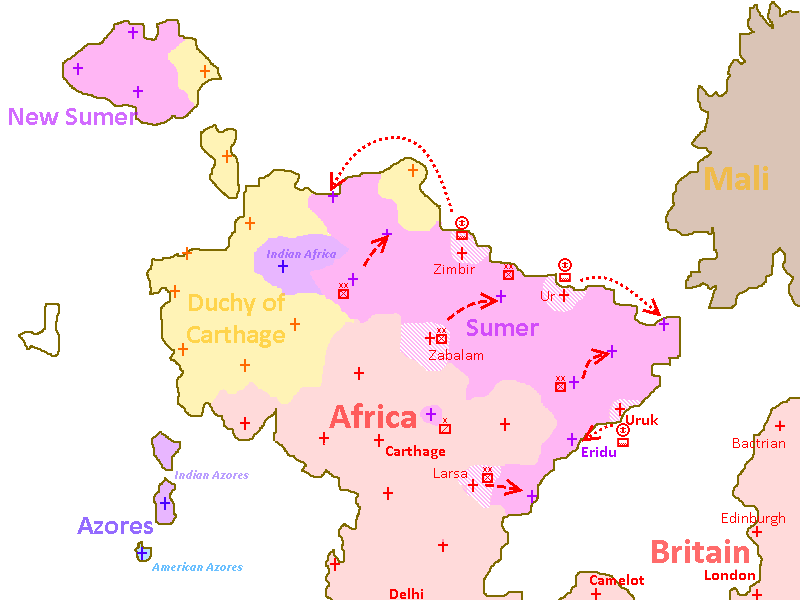
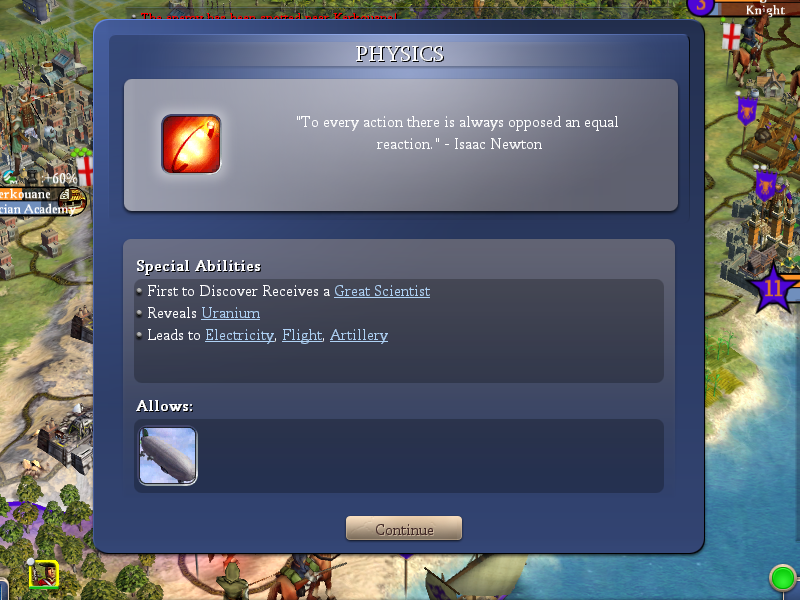
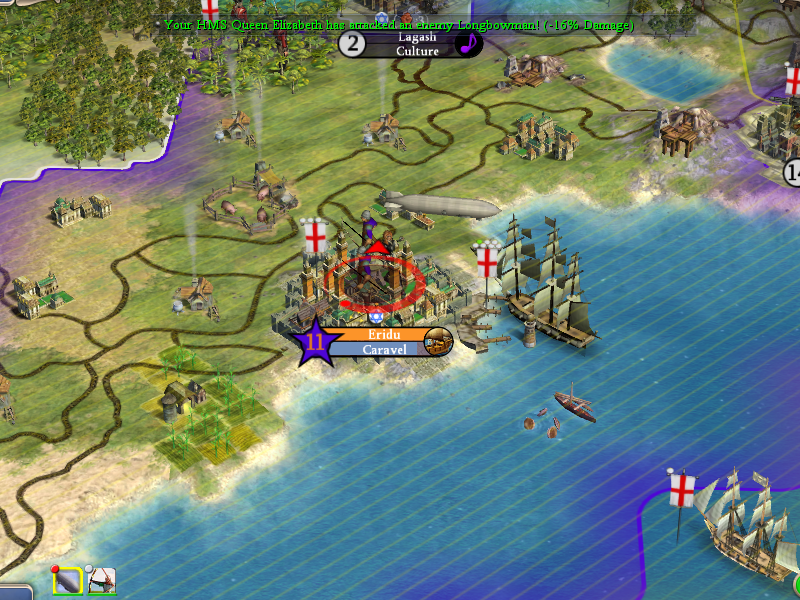
By the winter of 1619, Zimbir, Ur, Uruk, Larsa and Zambalam had successfully been captured. The war created pressure for new tools of conquest, and the Academy saw fresh funding to study the developing field of physics - including the work of Baron von Zeppelin of northern Africa, who pioneered the military applications of the dirigible. The first of these airships, the HMS Queen Elizabeth, began conducting airstrikes against nearby Eridu in 1622, with sister ships aiding in the strikes thereafter. Whilst slow and incapable of advanced manoeuvres, these early airships were completely unassailable from the ground and still able to deal significant casualties with their skyborne guns.
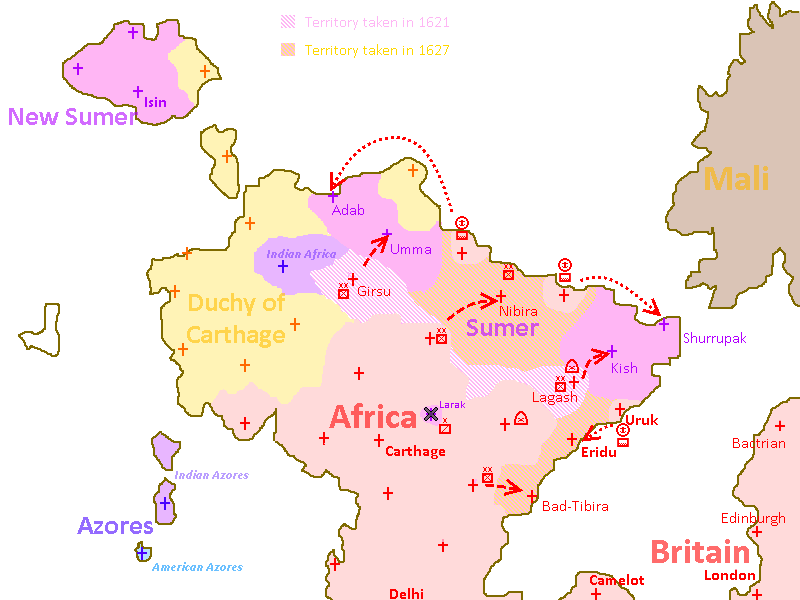
Where cities fell, troops advanced through the heavy Mesopotamian rainforest or else aboard galleons to strike at other coastal targets. By late 1621, Girsu and Lagash had fallen. Thereafter the invasion stalled for several years against fierce guerilla resistance and the need for resupply, a factor that General Martel had not considered in sufficient detail. It was Martel's death by stroke in 1626 that sparked the second advance, heralded by the thunder of airship gunfire. Bad-Tibira, Ekidu and Nibira were taken throughout 1627, the first two assisted by heavy airship support whilst the latter fell to a pincer attack between territorial and naval forces. Lagash and Kerkouane served as airbases for the dirigible fleet.
Between 1631-1632, the last months of the war dawned. The defences of the village of Larak, placed strategically within Anglo-African borders, were finally overcome and the village burnt to the ground. Shurrupak, the last major port in Mesopotamia fell to marine assaults, along with Kish and Umma, the once-impregnable hill fortresses of northern Africa. By 1633, only the northern port town of Adab remained under Sumerian control, their final foothold on the continent.
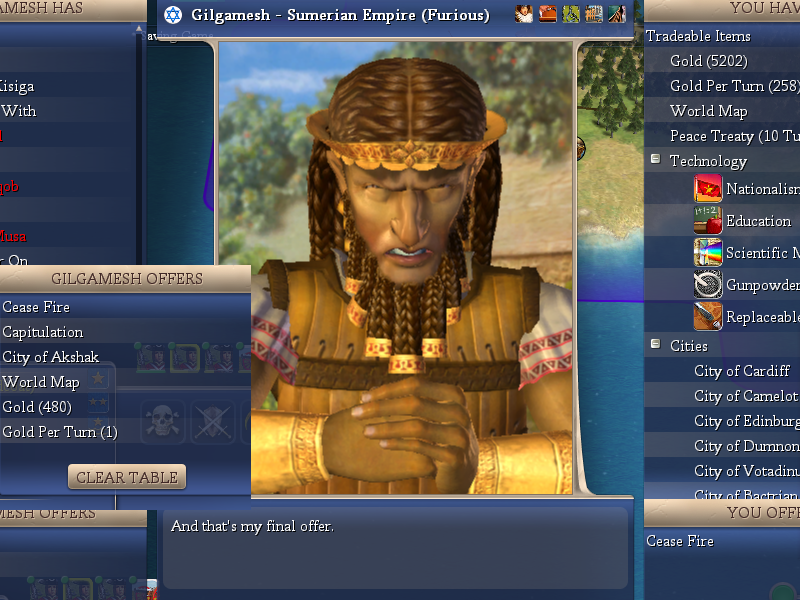
On the 3rd of March 1633, Adab fell to continued dirigible bombardment. Six days later, King Gilgamesh was dragged before the ancient Queen Victoria and given the option to bend the knee or see his people crushed for eternity. Rather than witness the butchering of his people, Gilgamesh offered up his oath, his treasury and the city of Akshak on New Sumer (at the insistence of the British Prime Minister, that they might have a place to send convicts) in exchange for his people's lives. King Gilgamesh knelt before the queen and arose Duke Gilgamesh of Sumer.
With the capitulaton of Sumer, Britain was now the undisputed hegemon of the eastern hemisphere. In acknowledgement of the variety of cultures and creeds under her reign, Queen Victoria styled herself Empress of Africa, and celebrated the United Kingdom the British Empire. 
 Author
Topic: Civ IV - Let's Try the British Empire: The Industrial Revolution (Read 17080 times)
Author
Topic: Civ IV - Let's Try the British Empire: The Industrial Revolution (Read 17080 times)
